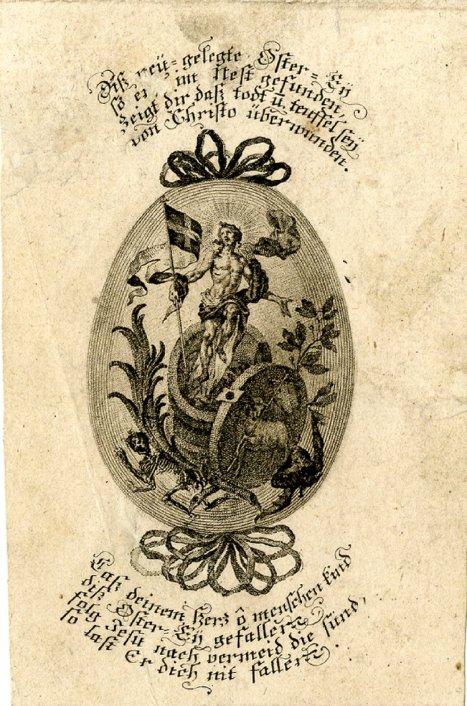Johann Baptist Klauber, “Diss neu=gelegte Oster=Ey…”, print, Augsburg, c. 1750s
Image: © The Trustees of the British Museum
This seasonal artwork from mid-eighteenth century Germany shows an Easter egg decorated with an image of the resurrected Christ quashing death and the devil. The oval tomb underscores the implicit parallel between the Resurrection and new life hatching from the egg. In translation, the pious poem surrounding the egg reads:
“This newly laid Easter egg / Just discovered in the nest / Shows you that death and devil have been / Overcome by Christ.
“Let your heart, oh child of man / Take pleasure in this egg / Follow Jesus, avoiding sin / He will not let you fall.”
According to John Brand, Observations on Popular Antiquities, I (London: Charles Knight, 1841): 98, such prints were occasionally given as gifts at Easter in Germany, instead of eggs. At only 74 x 111 mm (around 3 x 4.5 inches) it is probably best understood as a forerunner of today’s greeting cards. In contrast to the fleeting delights of edible treats, the print continues to offer spiritual nourishment two and a half centuries after its creation.

